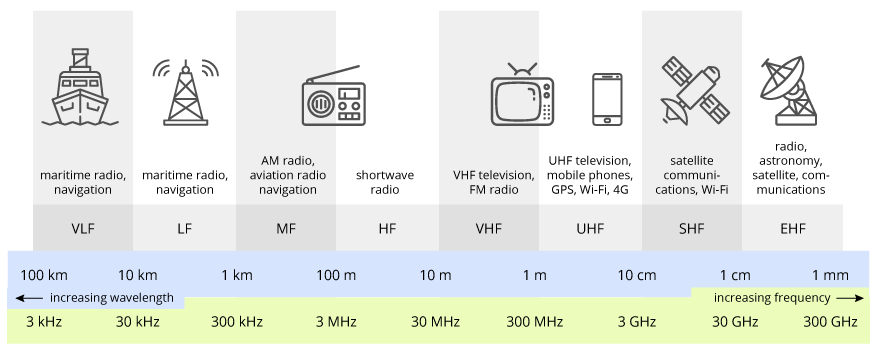Governance
Railways Gets 5 MHz Spectrum
- 10 Jun 2021
- 4 min read
Why in News
Recently, the Union Cabinet approved the allotment of 5 MHz spectrum in the 700 MHz frequency band to the Indian Railways for improving its communication and signalling systems.
- Railways has also approved a indigenously developed Train Collision Avoidance System (TCAS).
Key Points
- About:
- The project, targeted to be completed in five years, is estimated to cost over Rs. 25,000 crore.
- The spectrum charges will be levied based on formula as prescribed by Department of Telecommunications for Royalty Charges and License Fee for captive use as recommended by the Telecom Regulatory Authority of India (TRAI).
- With this spectrum, the railways will introduce Long-Term Evolution (LTE)-based Mobile Train Radio Communication (MTRC) on its routes.
- The Railways currently relies on optical fibre for its communication network but with the allocation of fresh spectrum, it will be able to use high-speed radio on a real-time basis.
- LTE is a fourth-generation (4G) wireless standard that provides increased network capacity and speed for cellphones and other cellular devices compared with third-generation (3G) technology.
- Benefits:
- Seamless Connection:
- It will be used for modern signalling and train protection systems and ensure seamless communication between loco pilots and guards.
- The purpose of the LTE for Indian Railways is to provide secure and reliable voice, video and data communication services for operational, safety and security applications.
- Reduced Accidents & Delays:
- It will help prevent train accidents and reduce delays by enabling real-time interaction between the Loco Pilot, Station Master and the Control Centre.
- Internet of Things:
- This will also enable the railways to undertake Internet of Things (IoT) based remote asset monitoring, particularly of coaches, wagons and locos, and monitor live video feed of CCTV cameras in the coaches to ensure efficient, safer and faster train operations.
- IoT is a computing concept that describes the idea of everyday physical objects being connected to the internet and being able to identify themselves to other devices.
- This will also enable the railways to undertake Internet of Things (IoT) based remote asset monitoring, particularly of coaches, wagons and locos, and monitor live video feed of CCTV cameras in the coaches to ensure efficient, safer and faster train operations.
- Seamless Connection:
- Train Collision Avoidance System (TCAS).
- It is a microprocessor based control system, which continuously monitors the speed, direction of travel, distance travelled, aspect of the signal passed and alertness of the motorman and thus increases the safety of the railway system.
- It will help in improving the safety and increasing the line capacity to accommodate more trains using the existing infrastructure. The modern rail network will result in reduced transportation cost and higher efficiency.
Radio Spectrum
- The radio spectrum (also known as Radio Frequency or RF) is a part of the electromagnetic spectrum, electromagnetic waves in this frequency range are called radio frequency bands or simply ‘radio waves’.
- Radio waves have the longest wavelengths in the electromagnetic spectrum. These were discovered by Heinrich Hertz in the late 1880s.
- RF bands spread in the range between 30 kHz and 300 GHz (alternative point of view offers coverage 3 KHz – 300 GHz).
- To prevent interference between different users, the generation and transmission of radio frequency bands is strictly regulated by national laws, coordinated by an international body, the International Telecommunication Union (ITU).





